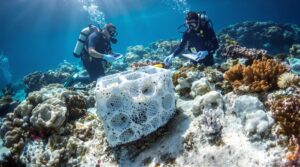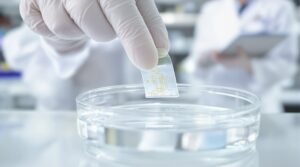Tech giants race to release fully offline, on-device AI assistants for smartphones
Smartphone makers see a turning point for artificial intelligence. They want assistants that run fully on the device, without clouds. This goal promises instant responses, improved privacy, and lower operating…
Breakthrough battery startup unveils sodium-ion cells promising cheaper EVs and resilient winter performance
A new battery startup has unveiled sodium-ion cells designed for affordable electric vehicles and harsh winter climates. The announcement highlights lower material costs, robust cold-weather behavior, and simplified supply chains.…
New coral reef restoration technique uses 3D-printed substrates to accelerate recovery after bleaching
Researchers are using 3D-printed substrates to help coral reefs recover after bleaching. These engineered structures provide stable, hospitable surfaces where coral larvae can settle and grow. The approach complements established…
Biodegradable electronic sensors that safely dissolve after use promise cleaner medical and environmental monitoring
Electronics that vanish after use sound futuristic, yet engineers already build them today. These biodegradable sensors monitor health and environments, then safely dissolve. They reduce waste, simplify recovery, and leave…
Major city pilots AI-driven traffic lights to slash commute times and emissions
City officials have launched a pilot for AI-driven traffic lights on several busy corridors. The program seeks faster commutes, fewer emissions, and safer streets. Engineers will test adaptive signal timing…
Maximalist metallics and sculptural accessories take over winter runways
Winter runways embraced spectacle and shine this season. Designers favored maximalist metallics and boldly sculptural accessories across fashion capitals. Reflective surfaces caught the lights and cameras with magnetic force. Voluminous…
Gene-editing therapy shows promising early results reversing inherited blindness in first human trials
Early clinical results suggest gene editing can partially restore vision in people born with inherited retinal blindness. Researchers are testing CRISPR-based therapies that directly correct disease-causing mutations inside retinal cells.…
AI-designed antibiotics show promise against drug-resistant infections
Drug-resistant infections threaten modern medicine by undermining routine care and lifesaving procedures. Hospitals now battle pathogens that withstand multiple drugs. Scientists are turning to artificial intelligence to discover new antibiotics…
Major social platform tests ad-free subscription tiers in more countries amid regulatory pressure
A major social platform is expanding trials of ad-free subscription tiers to additional countries. The company frames the move as a response to tightening privacy rules. Executives also position the…
Major fashion labels adopt digital product passports to boost traceability and fight counterfeits
Major fashion labels are rolling out digital product passports across collections. They want clearer traceability, stronger brand protection, and better customer trust. These scannable identities link each item to verified…








